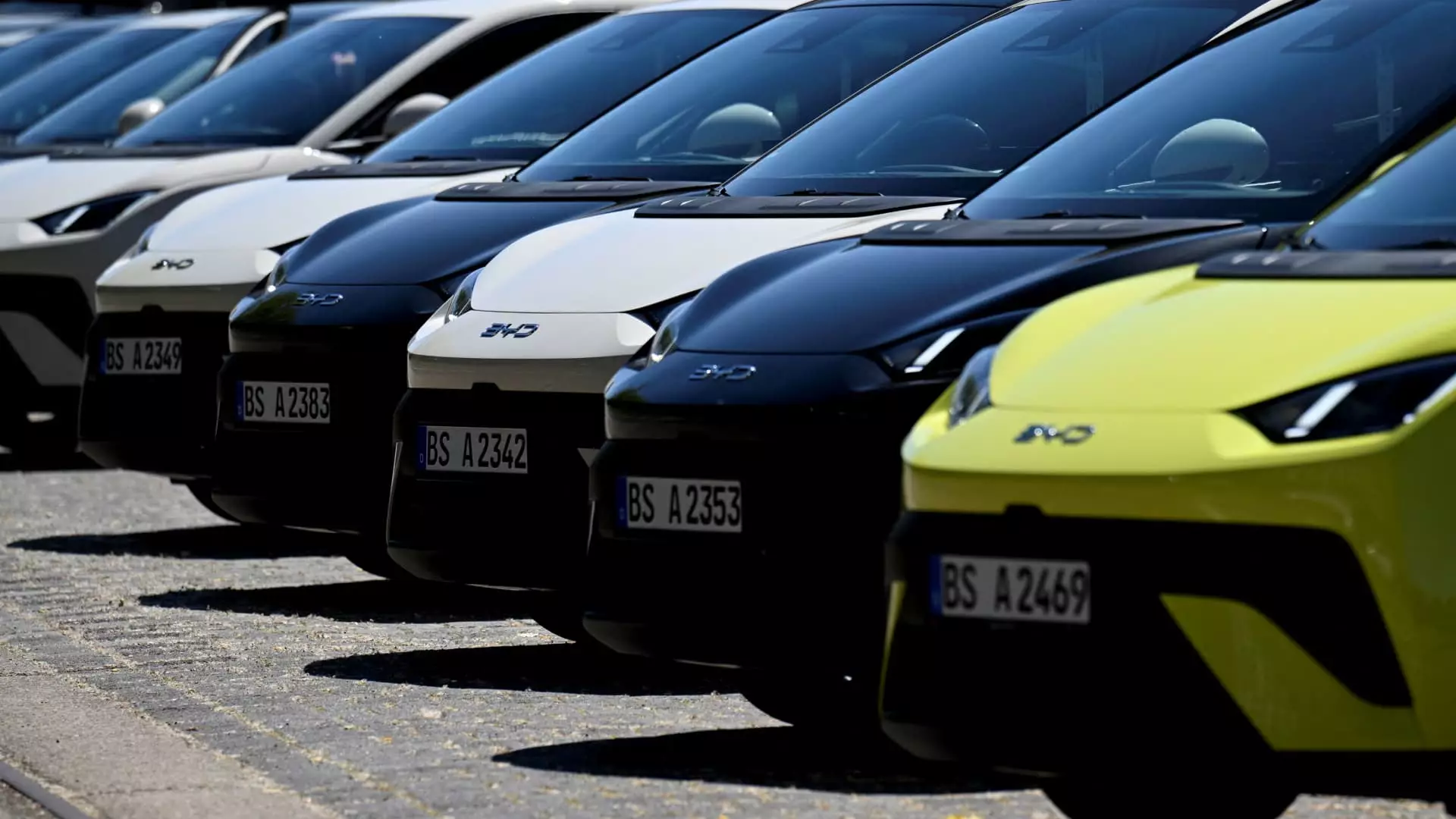China’s electric vehicle industry, long touted as an unstoppable force of innovation and growth, is beginning to reveal unsettling cracks in its façade. Recent sales data from May illustrates that Tesla, a pioneer in the electric vehicle (EV) market, witnessed a sharp 15% decline in sales compared to the same month last year. This significant downturn underscores one vital truth: even industry leaders are not immune to the savage realities of price competition engulfing the market. As Tesla’s once-loyal customer base increasingly turns to cheaper alternatives, the whims of economic trends and consumer sentiment denote a critical juncture not just for Tesla but for the entire EV landscape in China.
In stark contrast to Tesla’s woes, BYD reported a 14% annual sales increase, remaining dominant in terms of volume. However, this rise has come at a steep cost: the company has had to slash prices aggressively to maintain its competitive edge. This scenario is a clear call to arms for any established player in the market; the expectation is not simply to innovate but to commandeer the price war that is reshaping consumer preferences. Price drops may promise volume sales today, but at what long-term cost?
2. The Rise of the Underdogs
The rapid ascent of lesser-known brands like Geely and Xpeng raises eyebrows and provokes critical reflection. Analysts are increasingly pointing to Geely as a best-positioned player, adept at developing attractive models that not only undercut established competitors but also leverage shared technology and manufacturing efficiencies. With ambitious brands like Galaxy and Zeekr in its portfolio, Geely is effectively neutralizing price sensitivity among consumers who are more inclined to seek out superior specifications at competitive prices.
Furthermore, Xpeng, a startup that continues to make headlines with its advanced driver-assist technologies and newly launched budget-friendly models, has escalated its game with over 30,000 deliveries in May alone. While their expansions may appear promising, one must approach such developments with caution. The volatility of consumer preferences indicates that even emerging players could falter as quickly as they rise. In this respect, the current EV price war is not just a game of numbers—it speaks volumes about consumer trust and brand loyalty, both of which can vanish overnight.
3. Valuations that Don’t Add Up
Despite widespread excitement about the booming EV sector, there exists an underlying tension regarding valuations. Analysts have set ambitious price targets for companies like BYD and Geely—483 HKD and 22 HKD respectively—but these figures raise suspicions. While there’s an apparent optimism in the direction of these stocks, one must question whether current valuations reflect the economic realities of a highly saturated market.
The prospect of overly ambitious targets could deflate consumer and investor confidence, especially if companies fail to meet their inflated expectations. As the danger of speculative bubbles looms, it is crucial to assess whether the financial models behind these predictions can withstand the pressures of a mature market.
4. Impacts of Tariff Policies and Oversupply Risks
Price reductions are not the only challenges that the industry faces; external pressures loom large as well. Tariffs and increased manufacturing costs could throttle the recent gains made by companies aiming to expand into European markets. The current narrative around BYD’s international ambitions competes with a cautionary outlook espoused by JPMorgan, which warns about potential flooding of low-cost vehicles. Such scenarios risk provoking defensive measures that could stifle profitability and investor enthusiasm.
Moreover, the Macquarie analysts point out the disturbing reality of overcapacity in the market. With a production capacity exceeding 50 million units, far outpacing the annual wholesale of around 27 million vehicles, the disparity signals an impending consolidation phase. While some companies may claim they are positioned for success, they may ultimately find themselves swept under as capacity and competition realign in the face of financial reality.
5. The Psychological Toll of Price Wars
Above all, the ongoing price wars signify more than just economic turbulence; they illustrate the psychological toll that a competitive market exacts from manufacturers and consumers alike. As brands scramble to cut costs and push for sales, they risk sacrificing brand identity and long-term vision. Consumers may revel in discounts today, but they also run the risk of eroding their long-term loyalty and attachment to brands due to relentless price competition.
In a sector that prides itself on sustainability and innovation, the question remains: can a race to the bottom serve the greater good? While the current skirmishes may yield short-term benefits for some, they represent a dangerous road that could lead to homogenization within the industry—one that sacrifices quality, innovation, and differentiation in favor of survival. Thus, the challenges faced by China’s EV market illustrate a complex interplay of economics, branding, and consumer sentiment that stakeholders must navigate with care.

